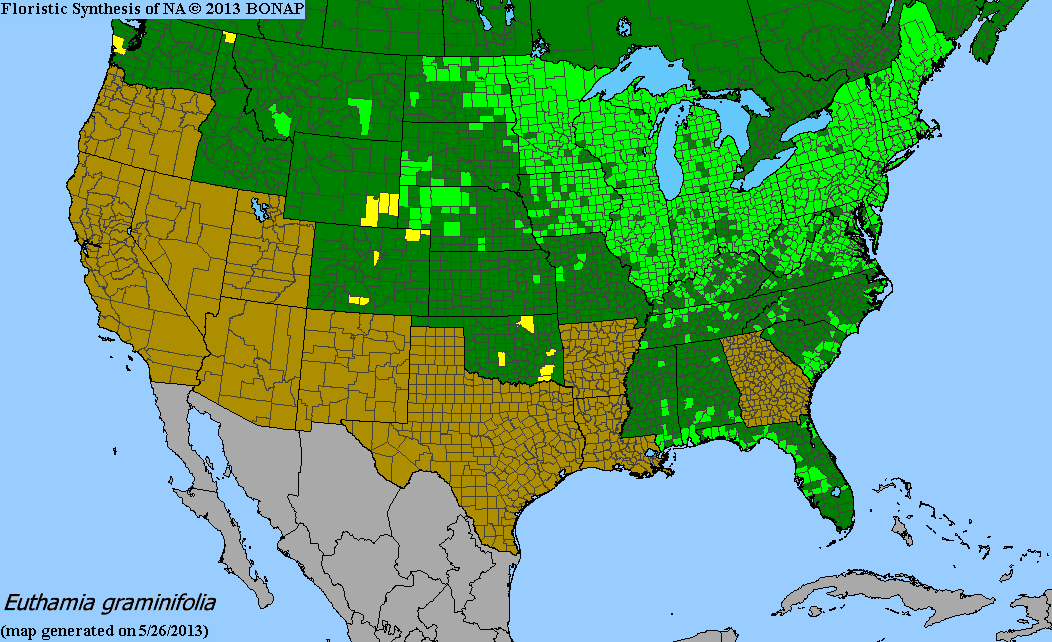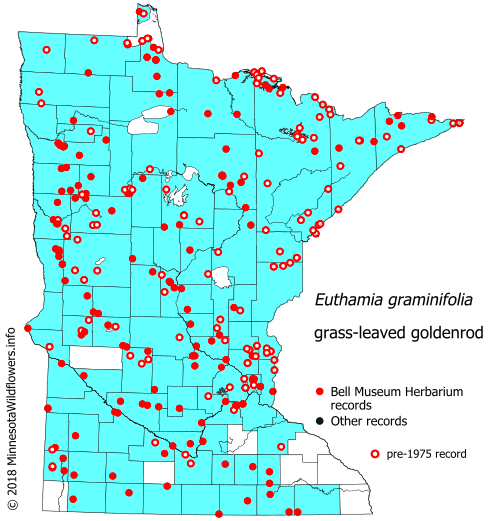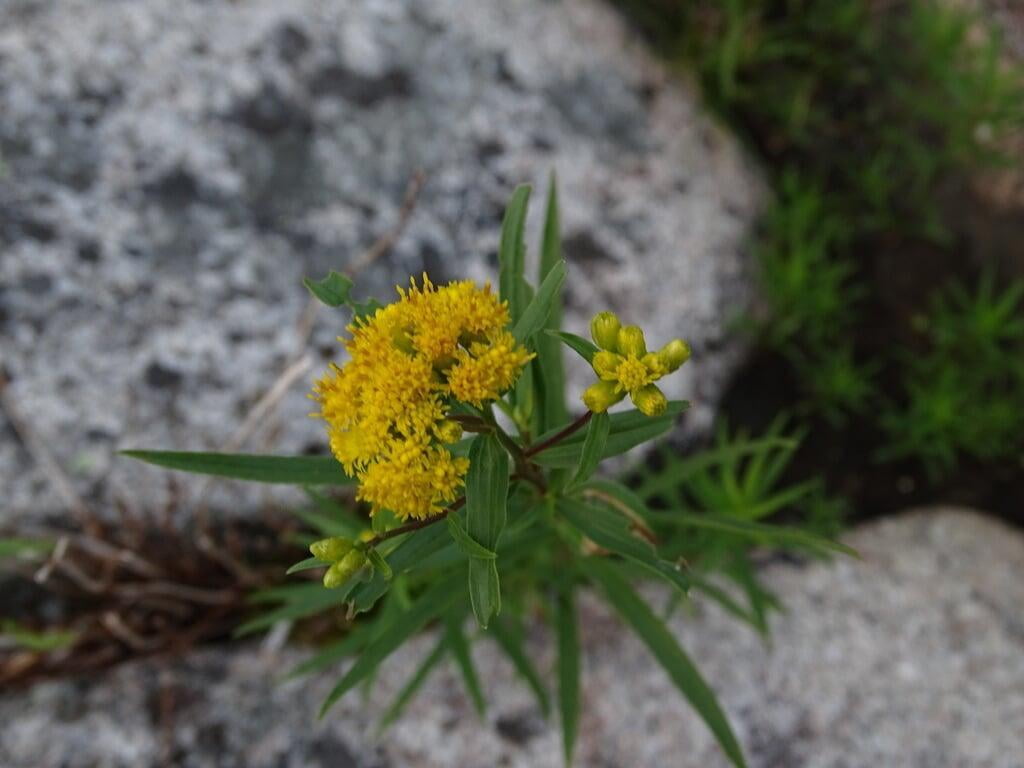Euthamia graminifolia
Grass-leaved goldenrod Description:
Euthamia graminifolia is a native North American perennial plant belonging to the Asteraceae family. It is commonly known as grass-leaved goldenrod, as its leaves are long and narrow, resembling grass blades. The plant typically grows 2 to 4 feet tall and 1 to 2 feet wide, forming clumps that are supported by strong, upright stems.
The plant blooms in late summer and early fall, producing clusters of bright yellow, daisy-like flowers at the tops of the stems. The flowers attract a variety of pollinators, including bees, butterflies, and flies, and provide an important source of nectar for them as they prepare for winter.
Grass-leaved goldenrod is an adaptable plant that can thrive in a range of soil types and moisture levels, but it prefers full sun to partial shade. It is commonly found in meadows, prairies, and open woodlands throughout much of the eastern and central United States.
In addition to its ecological benefits as a pollinator plant, grass-leaved goldenrod has a variety of traditional medicinal uses. The plant has been used by Indigenous peoples for its anti-inflammatory and antiseptic properties, and in modern times it has been studied for its potential as a treatment for conditions such as arthritis and Lyme disease.
Native Range:
Grass-leaved goldenrod is most commonly found growing natively in the Upper Midwest and Northeastern United States. That said, it is native to Northwestern and Southeast United States.
Standard Plant Information:
Plant Height: 2' - 4'
Bloom Time: July - September
Preferred Habitat: Does well in full sun and moist to wet sandy or gravelly soil. Often found in meadows, ditches, fens, and shores.
Sowing:
For most homeowners, the best option is to scatter seed on the ground by hand broadcasting at a minimum of 16-64 pls ounces per acre. For even coverage, we recommend that you broadcast seed in perpendicular rows across the site to ensure even coverage.
You’ll want to broadcast any grass seed first, which will get raked into the soil lightly. Next, it is ideal to mulch the area lightly with either a clean (no seed) straw or preferably with our native Little Bluestem straw, sold at our retail garden centers. After a light mulching is complete, now it’s time to broadcast your native wildflower seeds, which should not be raked into the soil. A good rain or watering is sufficient to cover the seed.
Planting:
Simply dig a hole in the soil slightly larger than the plant’s roots. Ensure that the soil line of the plant is maintained during the transfer (i.e. the plant should be at the same level with the ground as it was in the pot). Pack any loose dirt back around the plant and make sure you water it well the same day to ensure it has the best chance of survival.










